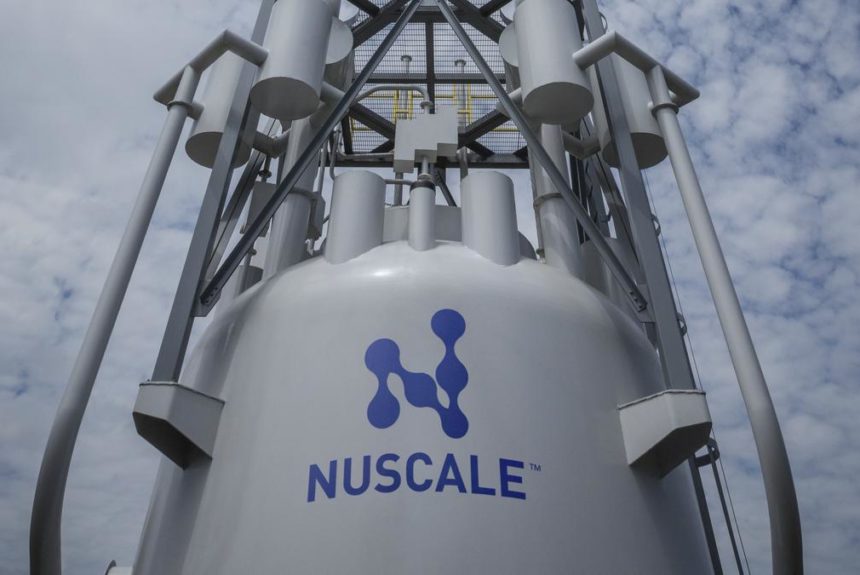This article originally appeared in RealClearEnergy
After decades of anti-nuclear rhetoric and moratoriums on new nuclear power plants, legislatures nationwide are finally embracing nuclear power as a clean, viable energy source by overturning state bans. While a step in the right direction, several of these ban lifts only apply to small modular reactors (SMRs), which have a capacity of 300 megawatts (MW) or less and are smaller than the current fleet of large light water reactors, many of which boast over 1,000 MW per reactor. Rather than focusing exclusively on certain forms of nuclear power, state and federal lawmakers should pursue policies that unleash competition in the industry to reduce costs and meet America’s economic and environmental goals.
>>>READ: U.S. Inability To Address Nuclear Waste Harms Environmental Progress
In California, the General Assembly is considering lifting its moratorium, but only for reactors up to 300 MW. Maine is advancing a similar piece of legislation that would allow for the construction of reactors up to 350 MW and a Connecticut bill would authorize a feasibility study for SMRs. Last year Illinois lifted its decades-long moratorium with legislation that authorized the build-out of reactors up to 300 MW.
Handcuffing America’s energy future to certain technologies—many of which are not yet commercially available— could hamper competition, environmental progress, and grid reliability.
As the U.S. looks to support the AI revolution and increased electrification, firm, baseload power is critical. In Virginia, Dominion Power is forecasting that grid demand will double through 2035 as data centers and cloud computing increase in the Commonwealth. Georgia plans to build an additional 18 gigawatts by 2040 to keep up with the state’s energy demand and Texas’ ERCOT is now expecting to reach peak loads of 152 gigawatts by 2030—far more than its current peak of 86 gigawatts.
While SMRs may be used to meet some of this oncoming demand—and companies like Microsoft are planning to use these reactors in the future—the challenges of building first-of-a-kind designs, along with output constraints of the technology may prove an SMR-only strategy foolhardy.
In addition to electricity, megawatt-specific caps are impractical for the nation’s industrial base. Steel, concrete, and chemical production all require heating inputs at very high temperatures. Currently, these needs are met by coal and gas, but promising innovations in advanced nuclear could soon displace that.
X-Energy, for instance, is deploying its Xe-100, an 80 MWe gas-cooled reactor, to decarbonize operations at Dow Chemical’s Seadrift site along the Gulf Coast. The Xe-100 is deployed in packs of four to generate 320 MWe. While the reactor could be deployed in packs of two or three, this would lessen its total output and reduce industrial production.
>>>READ: Jeff Duncan Outlines Policies to Unleash American Nuclear Power
TerraPower, meanwhile, is set to break ground on its Natrium reactor in Kemmerer, Wyoming. A 345 MW sodium-fast cooled reactor, Natrium is built with a molten salt thermal storage system that can increase the system’s output to 500 MW when needed. This flexibility will be especially important in complementing renewable-heavy grids while producing enough heat and power to support certain industrial processes.
While both X-energy and TerraPower’s designs could be disruptive, neither would be legally allowed in Illinois or California because of the states’ megawatt caps. As a result, any heavy industry in these states will continue to rely on the only affordable baseload power available: fossil fuels.
An SMR-only strategy also pushes back the timeline of a nuclear renaissance in the U.S. While promising and worth investing in, many of these technologies are still in the pilot or demonstration phase, and the U.S. will likely not see the first of these reactors commercially available until the end of the decade.
A technology-neutral nuclear energy strategy would allow for the construction of larger advanced reactors like the AP1000, which recently began delivering electricity to the grid at Vogtle units 3 and 4 in Georgia. While critics are right to point out that Vogtle was seven years delayed and $17 billion over budget, it should be noted that these cost overruns were a result of poor project management and an undeveloped workforce—both of which were byproducts of the U.S. not building nuclear reactors for some 30 years. It’s worth noting that between Vogtle 3 and 4, there was roughly a 30 to 40 percent cost reduction between the two units. Capitalizing on that hard-fought experience would further drive down the cost of large nuclear, benefiting consumers, investors, and the long-term health of the grid.
State SMR “carve-out” and feasibility study bills are both a positive sign of a shifting perspective on nuclear and a troubling limitation to its deployment. The market should determine which sizes and types of nuclear power are commercially viable, not state lawmakers. Instead of repeating past mistakes and picking winners and losers, policymakers must ensure that all forms and sizes of nuclear energy can be thoroughly evaluated as part of our energy future.
The views and opinions expressed are those of the author’s and do not necessarily reflect the official policy or position of C3.
